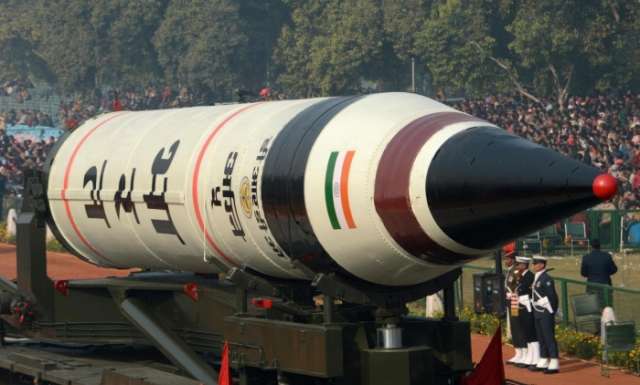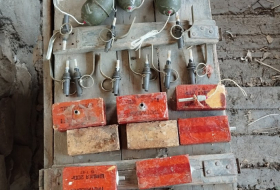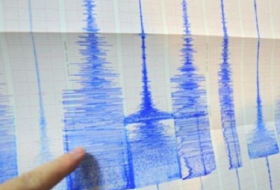India tests powerful new long-range ballistic missile

The missile was fired from a mobile launcher on Abdul Kalam Island in the Bay of Bengal, off India’s eastern coast, the ministry said. It travelled around 3,000 miles over 19 minutes.
The launch, which India described as ”a major boost to” to its defence capabilities, is likely to stoke further tensions in the region.
The missile is an advanced version of the Indian-built Agni series, a programme that began in the 1980s. It has been tested five times since 2012, with the last launch in December 2016 drawing condemnation from neighbouring Pakistan and China.
New Delhi has said it faces a twin threat from the two countries. Its rival Pakistan is developing a nuclear and missile programme of its own, while a long-running dispute between India and China over the Himalayan border has flared in recent years.
Expert’s said India’s test launch was likely intended to send a signal to China, which is increasingly looking to assert control over disputed territory in the South China Sea. While the world focused on an escalating feud between the US and North Korea, Beijing has been quietly bolstering its military presence on manmade islands in the South China Sea and the strategic waters around them.
Nitin A Gokhale, an independent national security analyst in New Delhi, said India’s military had “reoriented itself towards meeting the China challenge”.
“The process began about five years ago but is now galloping and is focused,” he added. ”Infrastructure projects all along the northern frontier are now actually being done on a war footing.”
India is believed to have a stockpile of between 120 and 130 nuclear warheads, according to the Federation of American Scientists, but none are currently operational. Pakistan is thought to have between 130 and 140, while China counts around 270 warheads in its nuclear arsenal.
The US has several thousand and the UK has 215, of which 120 are operational.
Vipin Narang, an associate professor of political science at MIT, who studies nuclear proliferation, said the test did not demonstrate new capability but was “simply a developmental test before India inducts it into operational range”.
But he told CNN the launch could have significant geopolitical consequences, adding it was “hard to not wonder whether this test and its timing were meant as a signal to China”.
In a statement, India’s government said: “The flight performance of the missile was tracked and monitored by radars, range stations and tracking systems all through the mission. All objectives of the mission have been successfully met.
“This successful test of Agni-5 reaffirms the country’s indigenous missile capabilities and further strengthens our credible deterrence.”
The country’s President, Ram Nath Kovind, writing on Twitter, said the launch “makes every Indian very proud” and would “boost our strategic defence”.
Once the weapon becomes operational, India will join an exclusive club of countries armed with missiles with a strike-range of more than 5,000km. The US, the UK, China, Russia and France also have intercontinental ballistic missiles.
The original article was published in the Independent.















































